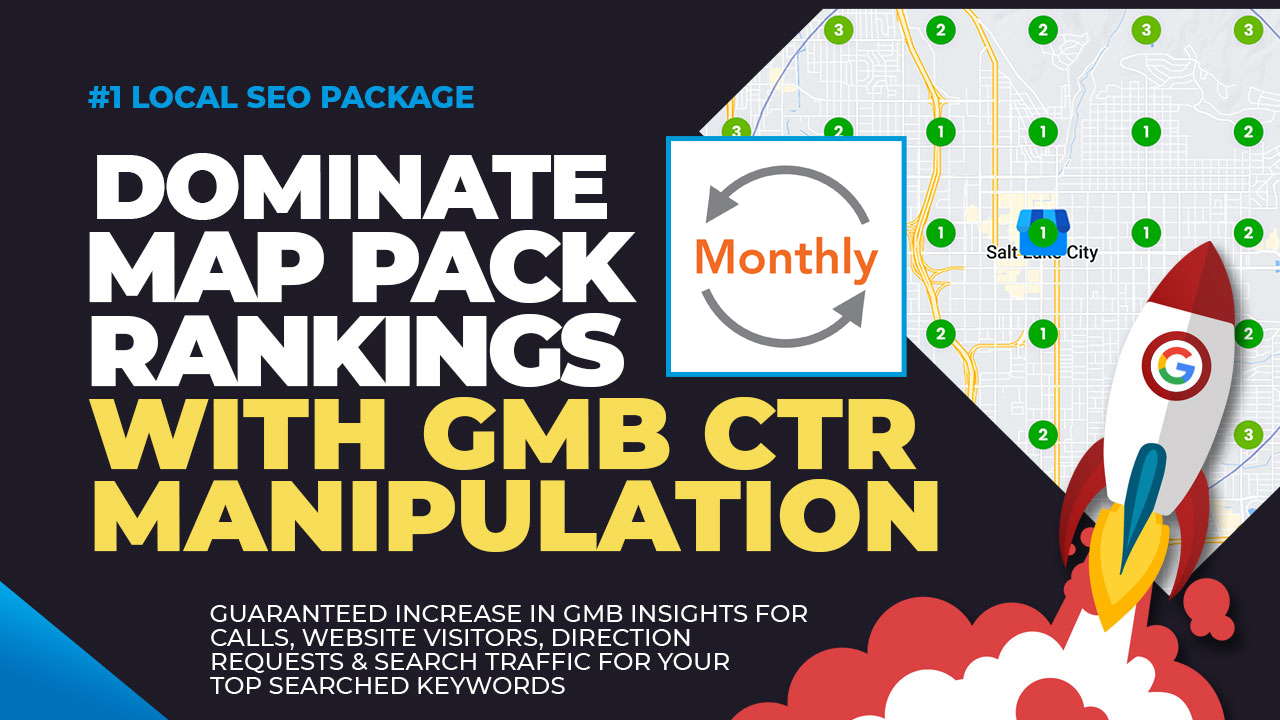CTR Control: The Secret to Dominating Search Engine Result
In the affordable landscape of electronic advertising, Click-Through Price (CTR) manipulation has emerged as a crucial technique for enhancing exposure in search results. While the appeal of boosted involvement through enticing headlines is indisputable, the ethical ramifications and possible consequences warrant careful factor to consider. A much deeper expedition right into the mental factors influencing CTR, alongside lasting and efficient strategies, exposes a complicated interaction between immediate gains and long-term count on. What approaches can be used to make certain that manipulation does not compromise honesty? The solutions may redefine just how we come close to electronic interaction.
Recognizing Click-Through Price
Understanding click-through price (CTR) is important for examining the effectiveness of electronic advertising and marketing projects. CTR is specified as the ratio of individuals who click a details link to the complete number of customers who see a advertisement, email, or web page. This metric offers as a vital sign of engagement and the importance of content to the target audience.
A higher CTR typically symbolizes that the marketing method is successfully capturing focus and encouraging action. Conversely, a reduced CTR might suggest that the content is not reverberating with customers, prompting a demand for evaluation and possible adjustment. Variables affecting CTR consist of the top quality of advertisement duplicate, aesthetic allure, and the significance of keywords.
Moreover, CTR can vary dramatically across different platforms and styles, highlighting the value of context in interpreting the information. Social media advertisements might generate various CTRs compared to browse engine results. By continually evaluating and keeping an eye on CTR, online marketers can identify fads, maximize campaigns, and boost total performance. Therefore, a detailed understanding of CTR is fundamental for driving conversions and attaining company purposes in the affordable digital landscape.
The Psychology Behind CTR
Leveraging emotional concepts can dramatically enhance the efficiency of click-through rate (CTR) methods. Comprehending the cognitive prejudices and psychological triggers that affect user behavior is crucial in crafting material that reverberates with audiences. For example, the concept of deficiency creates urgency; users are a lot more inclined to click on links that recommend limited schedule or time-sensitive deals.
In addition, social evidence plays a crucial duty in decision-making. When customers observe others involving with web content-- such as through high rankings or reviews-- they are more most likely to adhere to fit, reinforcing the significance of displaying positive comments prominently.
Furthermore, attracting inquisitiveness can drive clicks; intriguing headlines that stimulate inquiries or highlight uncommon realities force individuals to seek solutions.
Additionally, familiarity breeds trust fund. Regular branding and design across systems instill confidence, making individuals extra inclined to click familiar sources.
Techniques for CTR Renovation
Efficient methods for boosting click-through rates (CTR) are necessary for making the most of on-line engagement and driving website traffic. Furthermore, making use of persuasive language in meta descriptions to highlight special selling points can better raise CTR.
Another technique includes using abundant snippets, such as star scores, images, or other aesthetic elements in search results page. These enhancements not just catch individual focus but likewise supply valuable details at a glimpse, making the listing extra appealing.
Integrating a feeling of urgency or exclusivity in phone call to activity can also enhance CTR. Phrases like "minimal time deal" or "join now" can motivate immediate activity from prospective site visitors.
Moreover, leveraging A/B testing allows marketers to constantly fine-tune and maximize their strategies. By analyzing different headings, descriptions, and aesthetic components, companies can determine what resonates best with their target market.

Gauging CTR Efficiency
Measuring the performance of click-through price (CTR) techniques is vital for evaluating the success of on the internet campaigns. Beginning by tracking the overall CTR, which is computed by dividing the number of clicks by the number of sites perceptions.

Furthermore, think about the context of the CTR. If it does not lead to conversions, a high CTR does not always correspond to success. CTR Manipulation. Therefore, incorporating CTR data with conversion prices uses a much more all natural view of efficiency. Eventually, continuous tracking and modification based upon CTR effectiveness is critical for making the most of the impact of digital marketing approaches and achieving long-lasting success.
Honest Factors To Consider in CTR Adjustment
Browsing the world of click-through price (CTR) manipulation increases significant moral considerations that online marketers should resolve. While maximizing CTR can enhance visibility and engagement, it also provides the risk of misleading customers. Moral advertising and marketing methods require openness and sincerity; therefore, controling CTR with deceitful techniques, such as clickbait headings or misrepresentative content, can erode trust and damage brand track record.
Moreover, making use of fabricated methods to blow up CTR-- such as using robots or incentivizing clicks-- can violate platform policies and lead to fines, even more stressing the significance of moral compliance. Marketing professionals ought to consider the long-lasting implications of their right here strategies on customer connections and the overall stability of the electronic marketplace.
In addition, the ethical landscape includes the wider implications of data personal privacy. Accumulating user data for CTR optimization without notified authorization elevates significant moral worries. It is critical for marketers to engage in accountable information methods, making certain that consumer privacy is respected.
Ultimately, ethical considerations in CTR manipulation require a balance between company purposes and the dedication to openness, sincerity, and respect for customer legal rights. By prioritizing ethical techniques, marketing professionals can foster lasting development while keeping trust fund and reliability in the electronic space.
Verdict
In verdict, while CTR control might offer prompt exposure and engagement advantages, it presents substantial risks to long-term count on and compliance with search engine standards. Lasting electronic advertising and marketing approaches should focus on honest practices and authentic customer interaction, guaranteeing alignment with consumer rate of interests. A balanced strategy that stresses openness over deceptive techniques will inevitably cultivate lasting success in search results page prominence, safeguarding brands versus possible fines and reputational damage.
In the competitive landscape of electronic marketing, Click-Through Price (CTR) control has arised as a pivotal approach for Check Out Your URL enhancing exposure in search outcomes. CTR is defined as the proportion of users that click on a specific web link to the overall number of individuals that view a page, e-mail, or advertisement . Alternatively, a reduced CTR might indicate that the material is not reverberating with customers, motivating a demand for evaluation and possible modification.Browsing the realm of click-through price (CTR) control increases significant ethical factors to consider that online marketers should deal with. Gathering individual data for CTR optimization without notified authorization raises severe moral concerns.
Comments on “Transform Your Click-Through Rates with Proven CTR Manipulation Techniques”